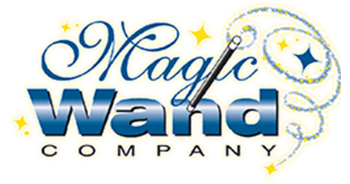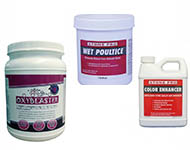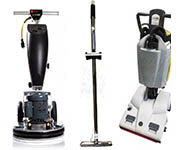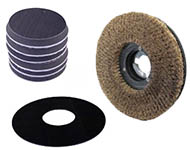Maximize your profit potential
Build your price to reflect carpet cleaning labor cost if you want the highest profit.
By Taf Baig
From Cleanfax magazine.
What is our biggest cost in the carpet cleaning business? Is it the carpet cleaning equipment? Is it our vans?
It’s neither of the above. Our biggest cost is labor. Whether you work alone or with a helper, or even if you’re off the truck, selling your employees and your labor is your real business. You could be a plumber, an electrician or in any service trade, but you still need to build your price to reflect your labor. Besides the obvious, like the quality of the work, the difference between a successful service business and a mediocre service business is its correct usage of its labor to maximize profit. Carpet cleaning labor cost can be saved with a wise plan. In this way, you will start making money cleaning carpets.
Unfortunately, when most of us started our business, we took cues from our competitors what they charge per hour or per square foot but we never looked at what we need to charge to maximize our profit.
Maximize profit
By maximizing your profit, I don’t mean you should be gouging or taking advantage of customers. You do need to charge a certain amount to achieve the dreams you had of owning your business when you first started. Not to mention, when you go to sell your business, who will buy it unless it’s profitable? So, how should you charge for labor to maximize your profit? Take, for example, MW Carpet Cleaning, which has the following breakdown per truck.
The company uses a truck mount with a two-person crew. The owner doesn’t go on the truck, and the company spends $1,000 per truck for advertising. Let’s examine all the costs one by one:
- Carpet cleaner crew chief $15 cost per hour
- Carpet cleaner helper $10 cost per hour
- Receptionist $10 cost per hour
- Truckmount with a truck ($900 a month) $2.81 cost per hour ($900/160 hours)
- Gas $1.50 cost per hour
- Uses 2-5 gallons stock solution per day $0.75 cost per hour ($3 ea/5 gallons)
- Uses two-thirds of 5-quart of Hydro-Force $2.34 cost per hour ($25/0.66 quart)
- FICA, workers compensation, taxes about 14 percent of labor $4.90 cost per hour ($35 x 0.14)
- Health insurance $200 per person $3.75 cost per hour (200 x 3/160 hour)
- Advertising expense of $1,000 a month $6.25 cost per hour (1,000/160 hours)
- Other expense: Office, surprises, $1,000 a month ? $6.25 cost per hour (1,000/160 hours)
So your total cost is $63.55 an hour. What about profit? This company will only make a profit for the owner if it charges more than $63.55. It wants to make a $40 profit for its owner per hour, per truck. Therefore, this company must charge at least $103.55 an hour.
Become a master of disguise
You can?t just tell your customers you?re going to charge them $103.55 an hour, so what do you do? You need to disguise your hourly rate into a rate per square foot or per room. Let’s do it for the company above, MW Carpet Cleaning.
If MW Carpet Cleaning charges by the room, how will they disguise it? Let’s say an average room is 200 square feet and you’re cleaning three rooms for a total of 600 square feet.
It takes you an hour to clean all three rooms. (If you don’t think it’s possible to do a great job cleaning three rooms in an hour, then you really need to look at getting a truckmount first to increase your cleaning efficiency.)
It takes you one half-hour in total driving time to and from the job. How much should you charge to make yourself $40 an hour?
$103.55 x 1.5 hours=$155.32. Divide $155.32 by three and you get $51.77 a room. Now, if MW Carpet Cleaning wants to charge by the square foot, you divide $155.32 by 600, which equals 26 cents a square foot.
Teach diversity
One way to charge more for your service and get even more customers, rather than scare your customers away, is by educating your customers about differences in your service and your competitors. You can do this by explaining to them:
- Your chemicals are safe
- Your chemicals are anti-resoil and keep the carpet cleaner longer
- You use sanitizing chemicals in your rinse
- You apply protectors
- Carpets are drier before you leave. When you apply sanitizers for restoration work, use gluderaheldehydes instead of the common sanitizers. These sanitizers protect against blood-borne pathogens and HIV viruses, etc. Tell them about your chemicals, don’t just put them on. Educate them. You control how they feel.
Promote protectors
What about a protector? Do you sell a protector? If not, you need to start profiting from this. I can’t even tell you how many people I talk to daily who say, I have been using X brand for 15 years and don’t want to try anything else.?
This has to be the most narrow-minded attitude anyone can take. In 15 years, everything has changed, including how protectors work. There was no Internet 15 years ago, and protectors then didn?t work like protectors today. I also hear, My carpet cleaning customers say that the protector I put down did nothing, so they don’t buy it again.
How will they work, when you don’t keep up with the times? Why will customers buy a protector if they don’t see it work? I’ll tell you how we sell protector in our business: we keep up with the times.
We only use protectors that work, because we know when we are back at the customer’s house or office next year, they’ll buy it again if it worked. When we first get to our customer?s house or office, we ask to show them a small demonstration in which we’ll apply a protector on a small area on their carpet (we don’t use paper towels because we want them to see how it will work on their carpet).
Disguise your hourly rate into a charge per square foot.
We put an air mover on the carpet to facilitate drying after application. Before we leave, we pour water on it in front of the customer. The water will bead up and give them a great visual.
If your protector doesn’t do this, you’re definitely not with the times. We have protectors from three different companies that do that, so they’re easy to find.
Calculating charges
How much should you charge for a protector?
This is probably the only item that has a higher material cost because it does not take much labor to apply. I could apply protector at 500 square feet a minute, with a labor cost of $1.079 per 500 square feet. If material cost is three cents a square foot, 500 square feet x .03 = $15. There are many ways to charge correctly. What we do is divide the total cleaning bill by 50 percent and charge that amount for the protector.
Most carpet cleaners charge 10 to 18 cents a square foot. What you should charge depends on your closing ratio. If you do the
demonstration and use the right protector, it will work. Next time, when your customers say, Protectors don’t work, don’t just agree with them and go on. Instead, show them how the protector you use works.
Start a carpet cleaning business.
Taf Baig is president of Magic Wand Company, a manufacturer and distributor of carpet cleaning tools, equipment and supplies. He is also president of a very successful carpet and furniture cleaning company. He owns patents to several tools and pieces of equipment. To e-mail him, visit www.magicwandcompany.com.
No products were found matching your selection.




